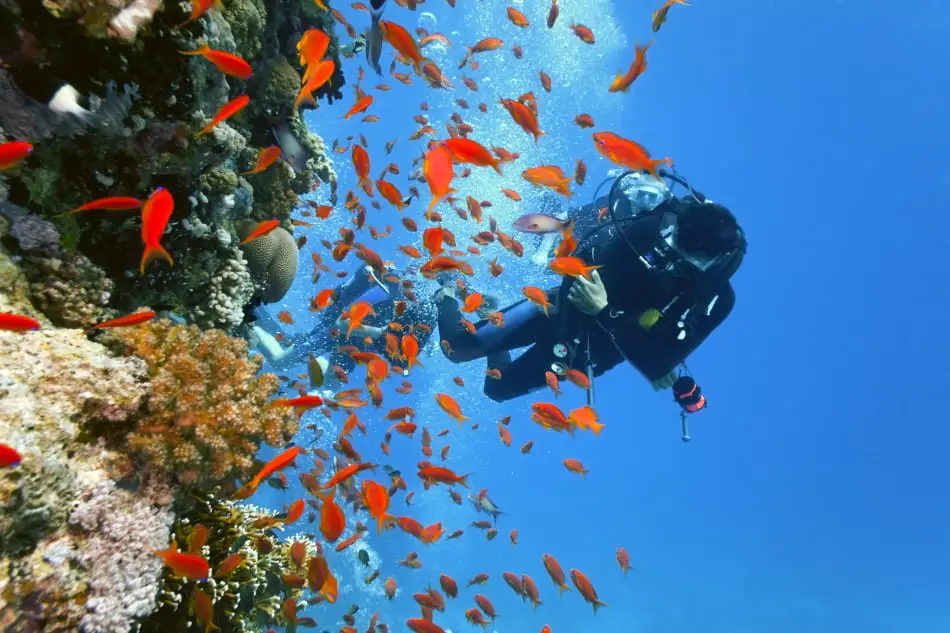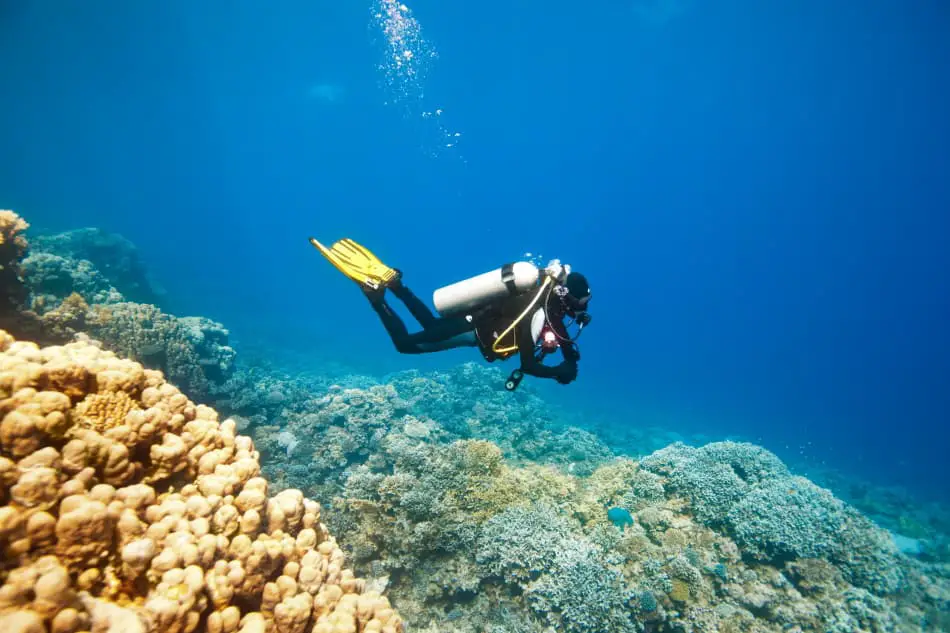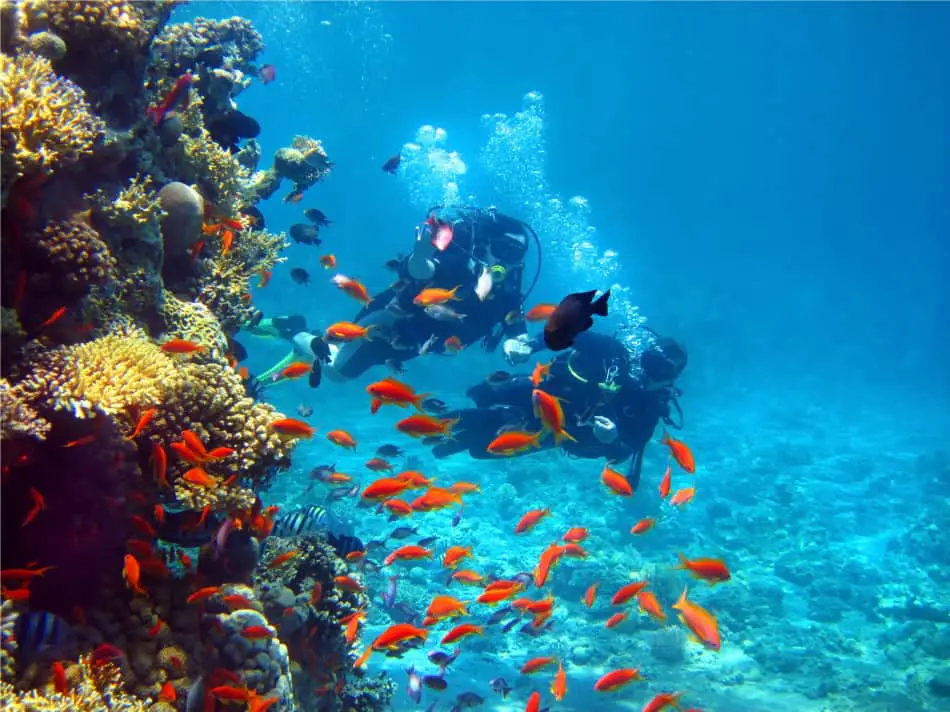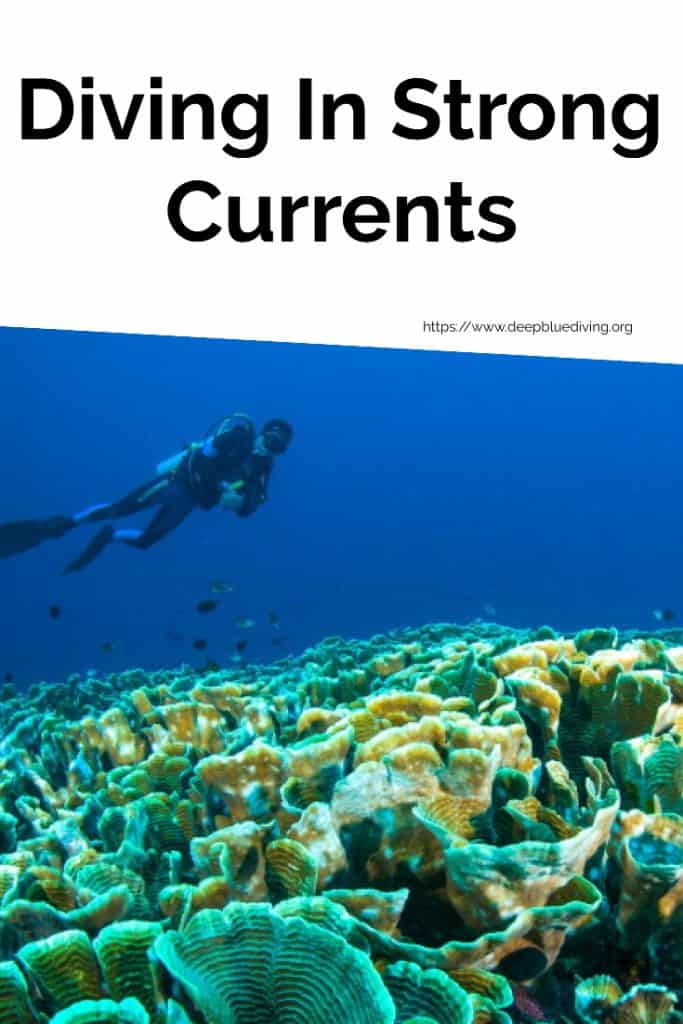A Guide on How To Safely Go Diving In Strong Currents
For many divers, diving in strong currents can be an exhilarating experience. However, if you are not prepared and do not exercise caution, it can soon turn into a nightmare. The current can push you away from your dive site and your buddies, and sweep you into the open sea.
To stay safe in the sea, you need to learn how to identify different types of currents, what dangers they pose, and how to stay safe in them.
How Do Currents Form?
Currents are just moving water and can be created by many different things like displaced objects, salinity, wind intensity, and even temperature.
As the wind blows across the sea, it pulls on the surface of the water forming waves. When the winds are fast enough they create huge waves. When these waves break on the shore, they create longshore currents.
Longshore currents are formed when a wave approaches the beach at a 90-degree angle. In this case, part of the wave’s energy is directed parallel to the shore, while the other is directed perpendicular to the shore. Hence when the wave breaks on the beach, it creates a drag that can sweep objects out into the ocean.
However, there are many currents that occur in the middle of the sea.
What is a Strong Current?
Strong currents are fast-moving and powerful channels of water. These current are very difficult to swim against and can create hazardous conditions on shore as well as in the middle of the sea.
Seasoned scuba divers can often predict powerful currents by observing the surface of the water. Areas, where the water is choppy without the presence of wind, can indicate a strong current. Additionally, if there is a boat moored at sea, it will be facing the current. If its mooring line is taut, it means the current is particularly strong.
Bubbles can also indicate how strong the current is at a dive site. A down current can sweep your air bubbles into the depths, while a vortex current will send your bubbles in a horizontal spiraling dance.
The behavior of fish around a dive site can also indicate the strength of the current. Small fish are more likely to seek cover in between corals when the currents are strong.
Light Current: Up to 1 Knot
When small fish are steadily finning and hovering near coral, the current is light, closer to one knot (1.15 mph). This type of current is safe to swim in for a short period of time.
Moderate Current: 1 to 2 Knots
You can identify this kind of current when small fish are swimming furiously, and their school is spread out barely above the corals. Moderate currents also affect larger fish, which face the direction of the current and seek shelter behind coral heads or out-of-current places.
This type of current is difficult to swim against.

Strong Current: 2 to 3 Knots
If there is a strong current, you will notice the absence of fish as most of them will have hidden between the coral branches. Big fish will be gathered in the lee areas of the coral near the bottom. If you dive into this current, you will not be able to fight it. So it is best to go with the flow (drift diving) rather than swim against it.
Very Strong Current: 3 Knots and Above
This current is so fast that you won’t even have time to look for the fish. You will probably be swept along with it. If you turn to face the current, it may sweep off your oxygen mask, or your regulator may even start to free-flow.
It is not advisable to go scuba diving in strong currents. Any current that is over 3 knots is too dangerous to dive in.
Types of Currents and Their Dangers
Down Currents
A down current occurs when a current hits a wall face, or when it drops off at a right angle. These currents can also occur when two currents moving in the opposite direction crash or move against each other.
These types of currents have quite a nasty reputation among scuba divers. Down currents can drag you down much deeper than you intended to go. Sometimes, the process is so gradual you will not even realize you are losing height until you need to equalize. However, in some cases, a strong down current at a dive site can pull you down 15 to 65 feet in just a few seconds.
Most down currents lose their strength the deeper they go. However, that doesn’t mean you should wait and let them carry you way down in the depths. Remember that most scuba divers don’t typically go deeper than 130 feet as the weight of the water can crush them.
Try to swim up and out of the current at a 45-degree angle rather than straight up.
If the current is very strong, you can inflate your buoyancy control device, though it will create a larger surface area for the current to push against, so it may not be of much help.
A good option is to get as close to the wall as you can and try to climb up. Since the current is very strong near walls, you may need to anchor yourself against coral reefs and the face of the wall. Do so safely.

Up Currents
Similar to down currents, up currents can occur when currents hit a wall. These currents pull you up to the surface very quickly. This may not seem problematic, but experienced divers know it can lead to a host of physical issues, including decompression sickness, gas embolism, and lung overexpansion injury. All of these can be deadly.
In this situation, try to swim out of the current’s range, or try to go down into the depth. Deflate your BCD and swim deeper where the push of the current is weaker.
Washing Machine Current
Like the name indicates, a washing machine current occurs when the topography of the bottom of the sea bounces the water around. These currents can bounce you like a ball in all directions, making you feel extremely disoriented. This feeling can be multiplied when you see your air bubbles swirling all around, making it difficult to understand which way is up.
As with the aforementioned currents, try to make your way out of this current too by swimming horizontally and slightly against the push of the water, so that you don’t get swept too far away.
Vortex Current
Vortex currents are quite rare, thankfully. A whirlpool with a downward pull is called a vortex. This type of current is best explained with the example of a bathtub. When you remove the stopper of your bathtub, the water rushes down the hole in a spiral movement, much like this current.
This type of current is called vortex current in the ocean and can be very dangerous for divers. One of the telltale signs of a vortex is bubbles forming a horizontal serpentine line.
Try to avoid getting caught in vortex currents. But if you have the misfortune of getting caught in one, remain calm, conserve your energy, and try to swim out of it when you feel it weakening.
Rip Current
Rip currents are a common type of current caused by tidal flows. When waves break near the surface, they pile up water between the other breaking waves and the beach. When this water returns to the sea, it does so in the form of a stream of water often moving perpendicularly from the shore. This is a rip current.
Rip currents can also occur when there is a break in the sand bar from where water can quickly funnel out into the sea. These channels often lie just off the beach. When water flows out, it follows the path of least resistance and passes through these channels, causing rip currents.
Rip currents are particularly strong during the nights of the full moon when the gravitational pull is the strongest.
A strong rip current can occur near man-made constructions as well which pose as an obstacle for the water, like jetties and piers.
Since rip currents are formed by waves, beaches that do not have breaking waves do not have rip currents.
If the rip current at a dive site is strong enough and localized, it can carry out an unwary swimmer into the sea. The current can move 0.3 to 0.6 meters in a second, but strong ones can move objects as far as 1.6 meters per second. This means that even Michael Phelps will find himself being swept out into the sea in a rip current.
Another dangerous thing about rip currents is that they can speed up in a very short time, so an adult standing on the shore will have a hard time staying in place.

How to Dive Safely in Strong Currents
If you find yourself in an unexpected current that you cannot fight against, try to follow these steps:
Go With the Flow: If the current is powerful and has already carried you far away from your buddies, don’t try to fight it or try to swim against the current. A speed that is over two knots is far more powerful than what an experienced scuba diver or even an Olympic swimmer can swim against. So instead of working to swim against the current, ride it out.
Most flows lose their strength when they go far out or deeper into the ocean. Once you feel it weaken, try to swim horizontally out of it. Most currents are quite localized, so even moving out just a few meters can help you escape from it.
Opt for a Drift Dive: If you plan to dive in a strong current, try to do a drift dive. However, make sure that the boat crew can see you so that they can bring the boat around to collect you once you come out of the drift dive. Therefore, it is important to keep a signaling device with you, like a reflective mirror or a whistle when you go drift diving.
Swimming Against the Current: if you do not want to do drift diving, start your dive by swimming against the current. Time your dive and plan your turn around depending on how powerful the flow is. When swimming in the same direction as the current, stay close to the seafloor or coral wall. The current is usually lighter at the bottom of the sea, so drift down to the floor. If the current unexpectedly starts to drag you, go into a horizontal position to become streamlined and try to cross the channel diagonally.
Become Streamlined: Dangling equipment can not only become damaged but can create a drag too. You will have a better diving experience when you are not encumbered by heavy gear and are naturally buoyant and streamlined. Keep your arms close to your sides or behind your back, so that they don’t drag you into unexpected directions.
Don’t Be Overweighted: Make sure you are always properly weighted but not overweighted. Although extra weight can help you descend quickly if you are caught in a current, it can also work against you by not allowing you to move in the right direction. If you know there is a fast current, do not burden yourself with too much scuba diving equipment, like underwater torches or cameras. However, do carry a surface marker, a reef hook, or a signaling device.
Stay Close to the Reef: A reef can provide you shelter in case of unexpected strong flows. You can use your reef hook to hold onto a section of the coral. However, be careful with this, as you don’t want to damage the reef.
Reefs can also be good indicators of currents. If there are Acropora or table currents, there is a chance that the area does not experience extreme flows, so it can be a good place for you to descend. Places with whip corals and sponges often have currents that are strong.
Look behind the coral to see if there are little fish sheltering there. If there are, you have found a lee where the current is not strong.
Listen to Experienced Divers: If you are not an experienced diver, it is not a wise idea to attempt dives in currents that are strong. Also, always listen to what your diving instructor is saying, and follow their advice.

Final Thoughts
When encountering a powerful current, the most important thing you need to do is to keep your head. Do not panic and start fighting the current. This will only expend your oxygen supply more quickly.
If the current is strong, switch to drift diving for a while until it gets weaker, and then swim diagonally or horizontally out of the channel. If you can, signal your buddies that you may be in a troubling situation.
Above all, make sure you brief yourself on how to safely dive in powerful currents. If you do this, there is no reason why you shouldn’t be able to dive safely in stronger currents.


